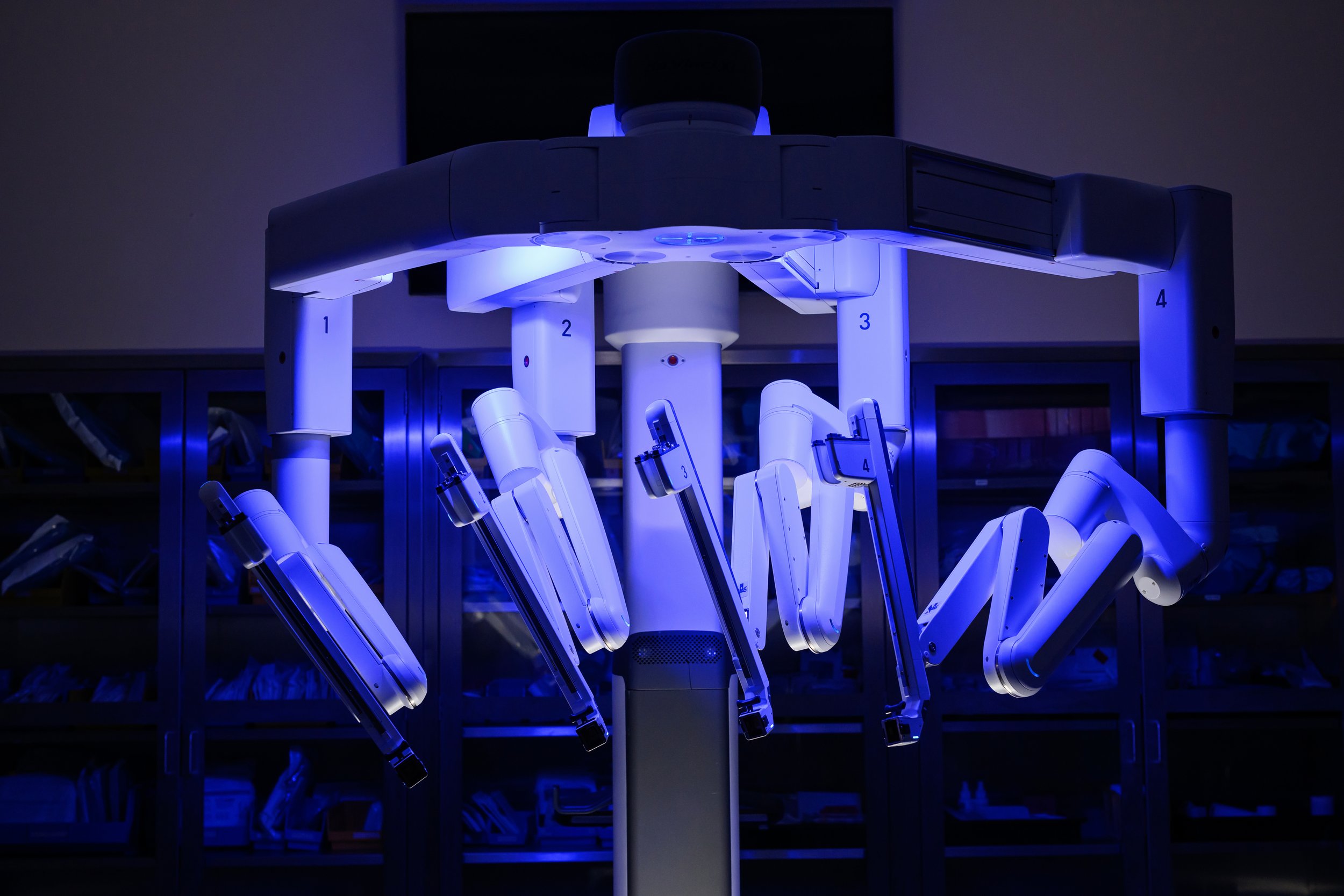
Hernia Center
At the Advanced Robotics of Louisiana’s Hernia Center, our team is skilled at performing robotic-assisted surgery for various types of hernias. While it’s true that not every hernia needs immediate treatment, hernias typically don’t get better on their own and most tend to get larger over time. Delaying hernia surgery could cause new or worsening symptoms, especially in men with inguinal hernias.
-
Large or recurrent abdominal wall hernias occur when someone has had multiple hernia repairs in the past or has had some type of significant abdominal operation that resulted in a very large hernia. These types of large hernias may require a special operation called a Component Separation, where the abdominal wall muscles need to be reconstructed to allow the hernia to be closed. Depending on the size of the hernia, this may be performed minimally invasively with robotic technology, however sometimes these may also need to be performed open in order to excise excess skin or scar tissue. A Component Separation hernia repair will often be a longer operation and require more time in the hospital to recover after surgery.
-
Femoral hernias are found in the upper thigh and outer groin area and occur in deep passages called femoral canals. These types of hernias are a lesser common type of inguinal hernia and have a higher risk of complication if left untreated. They are treated with the same approach as an inguinal hernia using robotic minimally invasive technology.
-
Hiatal hernias occur when the upper part of the stomach bulges into the chest through a small opening- the hiatus, in the diaphragm. The hiatus allows the esophagus, which carries food from the mouth to the stomach, to pass through the diaphragm as it becomes the stomach. Small hiatal hernias are sometimes called Sliding Hiatal Hernias and can contribute to reflux or heartburn. When a hiatal hernia becomes larger, it is sometimes called a paraesophageal hernia. As more of the stomach herniates into the chest, reflux symptoms can worsen and there is an increased risk of the stomach turning on itself (gastric volvulus). People may also have difficulty swallowing their food. Hiatal hernias are repaired with robotic technology as well.
-
Inguinal hernias are found in the inner groin area and occur when the intestine or intra-abdominal contents protrude through one of two passages in the lower abdominal wall called inguinal canals. Sometimes a person may have a hernia through each canal at the same time. You may also have a hernia on each side of the groin known as bilateral inguinal hernias. A third area in the groin where a hernia may occur is known as a Femoral hernia, where the intestine protrudes through a space known as the femoral canal. All of these hernias are repaired in the same way, using the robotic platform.
-
Parastomal hernias are hernias that occur around an ostomy site. Sometimes ostomy site hernias can be repaired if the ostomy can be closed. If the ostomy cannot be reversed the parastomal hernia can be repaired with the ostomy in place. This can also be performed using robotic technology. This is considered a more complex type of hernia and will often take more time to perform correctly. Generally, patients will remain in the hospital for several days following surgery.
-
Ventral hernias occur anywhere along the abdominal wall and can result from a prior abdominal incision or spontaneously. Sometimes depending on the size of the hernia, these may require a more complex repair, with the surgeon separating and restructuring the abdominal wall muscles. Robotic ventral hernia repair is a minimally invasive technique that allows surgeons to repair the hernia through three or four small incisions, with better visualization and the most precise movements.
Types of ventral hernias:
• Epigastric hernias occur above the belly button. These may occur in the setting of rectus diastasis, a condition where the central tendon of the abdominal wall thins out and creates a weak area, predisposing the abdominal wall to hernia formation.
• Incisional hernias are typically a result of a previous abdominal surgery, which usually involves an incision down the middle of the stomach. incisional hernias may occur anywhere along the abdomen where a prior surgery has been performed. An incisional hernia is usually a slightly more complex surgery due to the increased risk of bowel adhesions or scar tissue formation inside the abdomen.
• Umbilical hernias occur at the belly button. Umbilical hernias often begin as a very small defect but tend to slowly enlarge over time. As the hernia enlarges there is an increased risk for the intestines to become trapped in the hernia and require an emergency operation. These hernias can be repaired using robotic technology.
Hernias We Treat
Meet Our Surgeons
-

Karalyn R. Bentley, MD
-

V. Keith Rhynes, MD
-

John J. Tabor, MD
-

Tuan Tran, MD
Become a Patient
Complete our contact form or call (225) 333-3800 to connect with our team at Advanced Robotics of Louisiana to learn if robotic surgery is the right approach for you.

